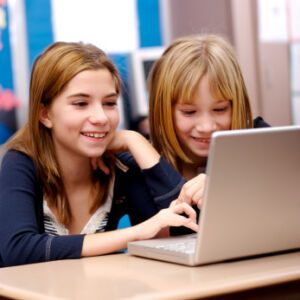Most of us look forward to the winter break, a time to celebrate holidays, connect with family and friends, or just take some much-needed downtime to relax. While we may feel recharged and ready when the school year resumes in the new year, many educators also anticipate an increase in challenging behaviors. For those of us who support students with more intensive social, emotional, and behavioral needs, an extended break from school (and the structure a school day provides) may mean we need to prepare for a readjustment period when we return. Below, we discuss five ways that educators can proactively prepare for students returning from the winter break to set both students and staff up for success.

Review behavioral expectations and routines.
Everyone can benefit from a review of the classroom expectations and routines after some time away. For students with disabilities and those with more intensive social, emotional, and behavioral needs, the transition from break time back to school time can be dramatic and potentially problematic. Begin the first day back with a reminder of your classroom expectations and routines, which should be interactive and include plenty of examples and non-examples and some role-playing, as appropriate. [team – maybe we add a link to a previous blog about teaching expectations]. It can be even more impactful to connect some of your broad expectations to students’ experiences over the break. For example, if one of your expectations is to “Be responsible,” you can ask students to give examples of how they were responsible over the break – maybe helping with tasks around the home, assisting with siblings, getting up on time, or other ways they demonstrated responsibility during the break. Making these connections can help with the generalization of prosocial behaviors, too; students realize that social skills related to their classroom expectations can also be applied in other environments.

Expect and plan for mistakes.
When we haven’t done something for a period of time, we might be rusty. It may take us a few tries to get back into the swing of things (think about going back to the gym after a hiatus or trying to remember how to knit). Students may have this same experience after an extended break, so we should expect and plan for social behavior mistakes. We can start by reminding students about classroom expectations and routines (as discussed above) and then providing plenty of active supervision – where we’re watching, scanning, and interacting – to look for and reinforce demonstrations of behaviors that meet our expectations. While some students may need only a little time to readjust and will be back in “student mode” at some point during the first day back, others may need more time and more support to make the transition. We can meet privately with these students and consider additional supports (e.g., short-term goals, increased reinforcement for meeting expectations) as needed.

Provide increased prompts and precorrections.
After an extended break, we may need to review and even re-teach some of our expectations and routines. We should also increase our prompts and precorrection – that is, we should proactively remind students about expected behaviors before they should be demonstrated (i.e., prompts), especially in situations where challenging behaviors are likely to occur (i.e., precorrection). For example, when students are getting ready to do their first independent work after an extended break, we can say, “Who can remind us all what it looks like to be engaged when we’re working at our desks?” We then solicit student examples and supplement as needed (e.g., feet on the floor, eyes on our own work, raise your hand if you need help, etc.). If we know when students are likely to have challenges (for example, the first post-break transition from a preferred activity like recess to a non-preferred activity) we can use precorrection strategically: “Okay, everyone! We have four minutes before we head inside. Let’s start returning equipment! If everyone is in line with their hands at their sides before time is up, we can have two minutes of extra recess tomorrow!”
especially in situations where challenging behaviors are likely to occur (i.e., precorrection). For example, when students are getting ready to do their first independent work after an extended break, we can say, “Who can remind us all what it looks like to be engaged when we’re working at our desks?” We then solicit student examples and supplement as needed (e.g., feet on the floor, eyes on our own work, raise your hand if you need help, etc.). If we know when students are likely to have challenges (for example, the first post-break transition from a preferred activity like recess to a non-preferred activity) we can use precorrection strategically: “Okay, everyone! We have four minutes before we head inside. Let’s start returning equipment! If everyone is in line with their hands at their sides before time is up, we can have two minutes of extra recess tomorrow!”

Engage with families throughout the transition.
As we mentioned, students may have a variety of experiences during the break. They may spend time with family members that they haven’t seen in a while, they may have visitors or be visiting others, they may have few limitations placed on what they like to do (e.g., video games, sleeping), or they may spend more time than usual alone. Any and all experiences have the potential to impact student behavior when they return to school; the more we know about the experiences students have had over the break, the more effective our supports can be. For example, if family members share that the break was busy and social with lots of visitors and events, a student may continue to desire frequent and intense socialization – or, conversely, the student may want to spend time alone. The stronger the relationship we have with our students (and their families), the more we’re able to predict and prevent challenges. Similarly, if a family member shares that a student has played video games almost constantly throughout the break, the student may struggle with a return to structure, and we can expect some mistakes – and apply the strategies we’ve discussed above.
For students and staff, the transition back to school from an extended break can be both exciting and challenging, but we can minimize the challenges by reviewing our expectations and routines, building in time for students to share with us and each other, expecting and planning for mistakes, increasing our prompts and precorrection, and staying engaged with our students’ families. As always, we remain supportive and helpful, emphasizing prevention rather than reaction. Wishing you all the best in the new year!



